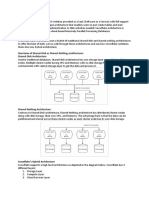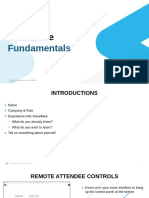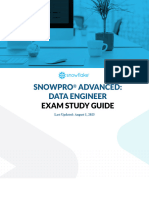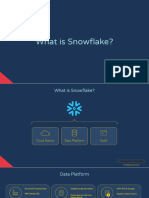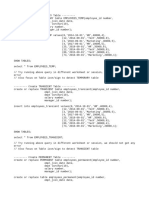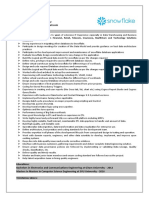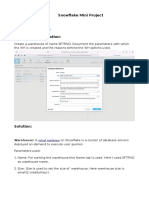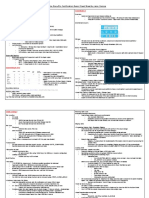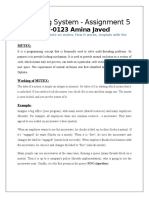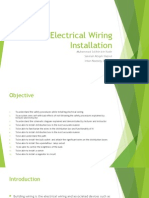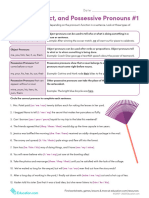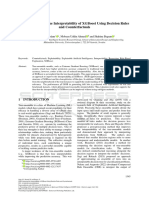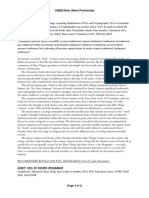0% found this document useful (0 votes)
606 views4 pagesKey Concepts & Architecture: Data Platform As A Cloud Service
Snowflake is a cloud-based data platform that provides data storage, processing, and analytics capabilities as a software-as-a-service. It uses a hybrid architecture of shared disk and shared nothing designs by storing data centrally and processing queries using massively parallel processing compute clusters. Snowflake's architecture consists of database storage, query processing using virtual warehouses, and cloud services that coordinate activities across the platform. Users can connect to Snowflake using a web interface, command line clients, JDBC/ODBC drivers, or native/third party connectors.
Uploaded by
UniformatterCopyright
© © All Rights Reserved
We take content rights seriously. If you suspect this is your content, claim it here.
Available Formats
Download as DOCX, PDF, TXT or read online on Scribd
0% found this document useful (0 votes)
606 views4 pagesKey Concepts & Architecture: Data Platform As A Cloud Service
Snowflake is a cloud-based data platform that provides data storage, processing, and analytics capabilities as a software-as-a-service. It uses a hybrid architecture of shared disk and shared nothing designs by storing data centrally and processing queries using massively parallel processing compute clusters. Snowflake's architecture consists of database storage, query processing using virtual warehouses, and cloud services that coordinate activities across the platform. Users can connect to Snowflake using a web interface, command line clients, JDBC/ODBC drivers, or native/third party connectors.
Uploaded by
UniformatterCopyright
© © All Rights Reserved
We take content rights seriously. If you suspect this is your content, claim it here.
Available Formats
Download as DOCX, PDF, TXT or read online on Scribd
/ 4
